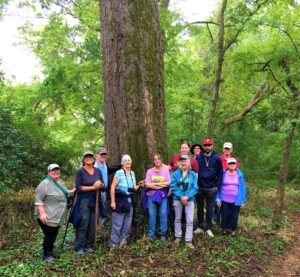By Bill Dunson
My wife and I recently purchased two parcels of 36 acres total adjacent to the beautiful Haw River in Alamance County, North Carolina. Our intent was not only to retire near our son in Durham, but to have a small oasis of nature in the larger whirlwind of development that swirls around so many areas.
Backyard Parks
Such “backyard parks” are coming to be increasingly important in the attempt to preserve as much as possible of our rapidly diminishing natural world. Even a small lot can be managed to contain native plants and to foster only non-native species that are (hopefully) minimally invasive and beneficial to the natural world including birds and butterflies. The corridor along the Haw River is especially well preserved due to the periodic floods that inundate a broad strip of bottomland floodplains adjacent to the river. But there has been a long history going back to the middle 1700s of severe exploitation of the land and water for agriculture and industry (primarily textile mills).
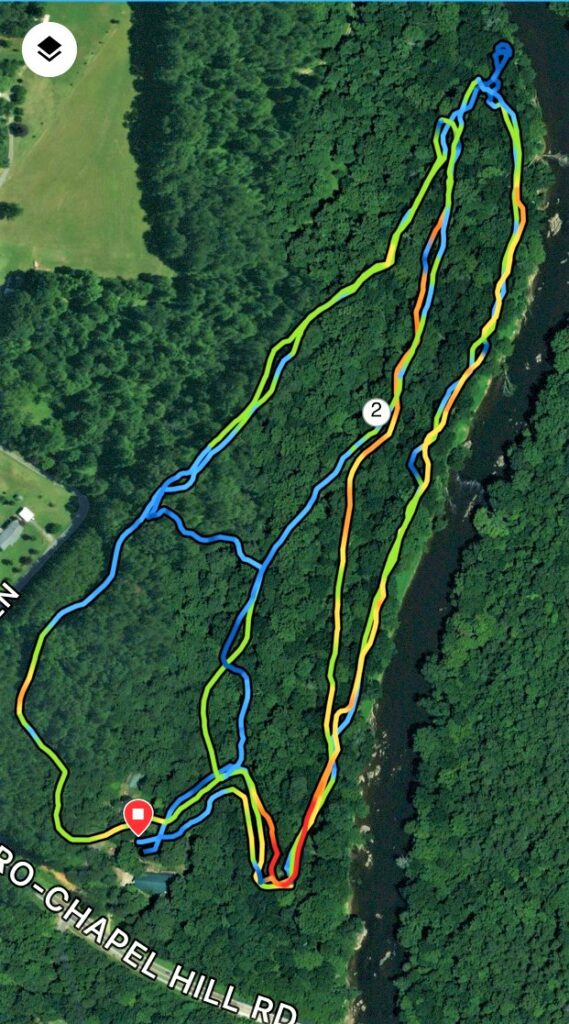
We have worked hard to develop a system of walking trails in this mostly forested area, so we can host groups such as those from the local Reid Chapter of the North Carolina Native Plant Society. Last fall, for example, we led two NCNPS field trips through our land.
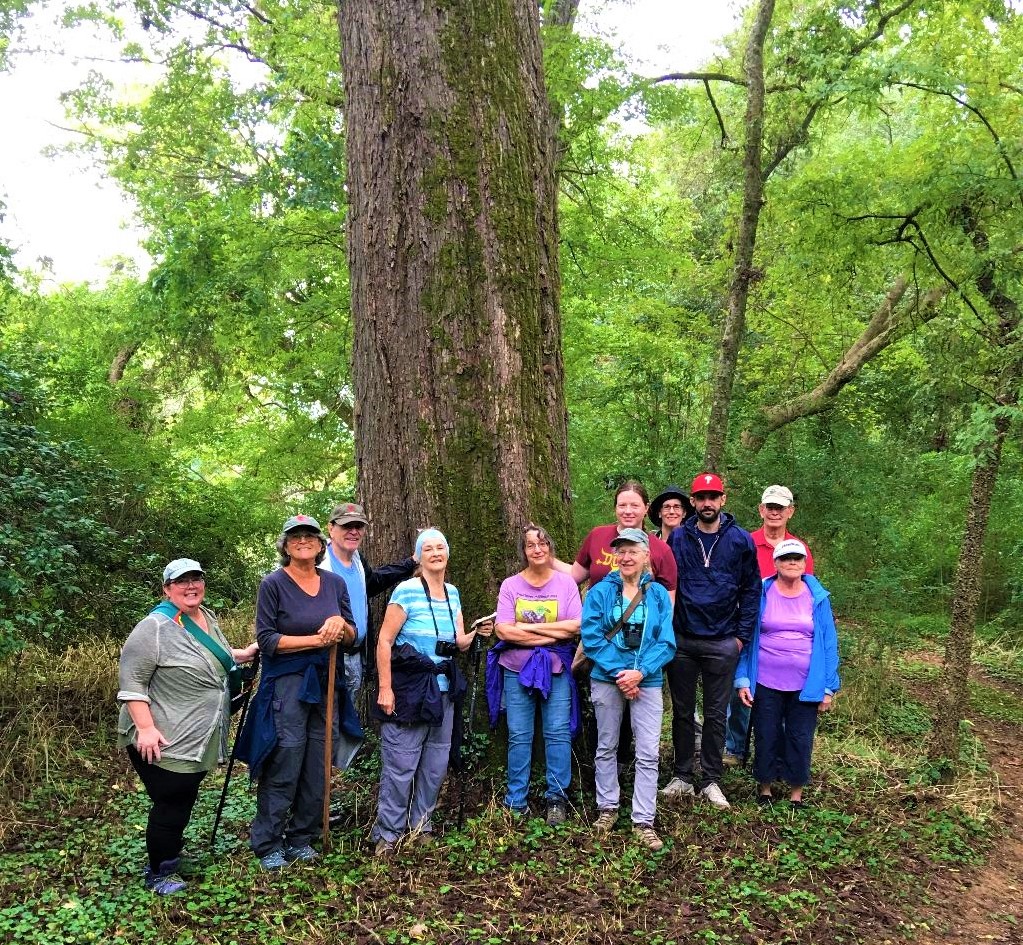
This photo shows part of one Reid Chapter group standing at the base of an old growth American Elm (Ulmus americana). This huge magnificent tree is growing along a dike immediately adjacent to the river, illustrating how a tree of about 100 years old can show the recent persistence of this sandy structure.
How Can This Land Heal?
I believe that 300 years of European human occupation of this area have had a massive negative impact that has been remarkably healed by recent abandonment of intensive farming and industry. The presence of an Indian fish weir, likely used mainly to catch shad in the spring, reveals a much longer human occupation of the area that possibly extends back thousands of years.
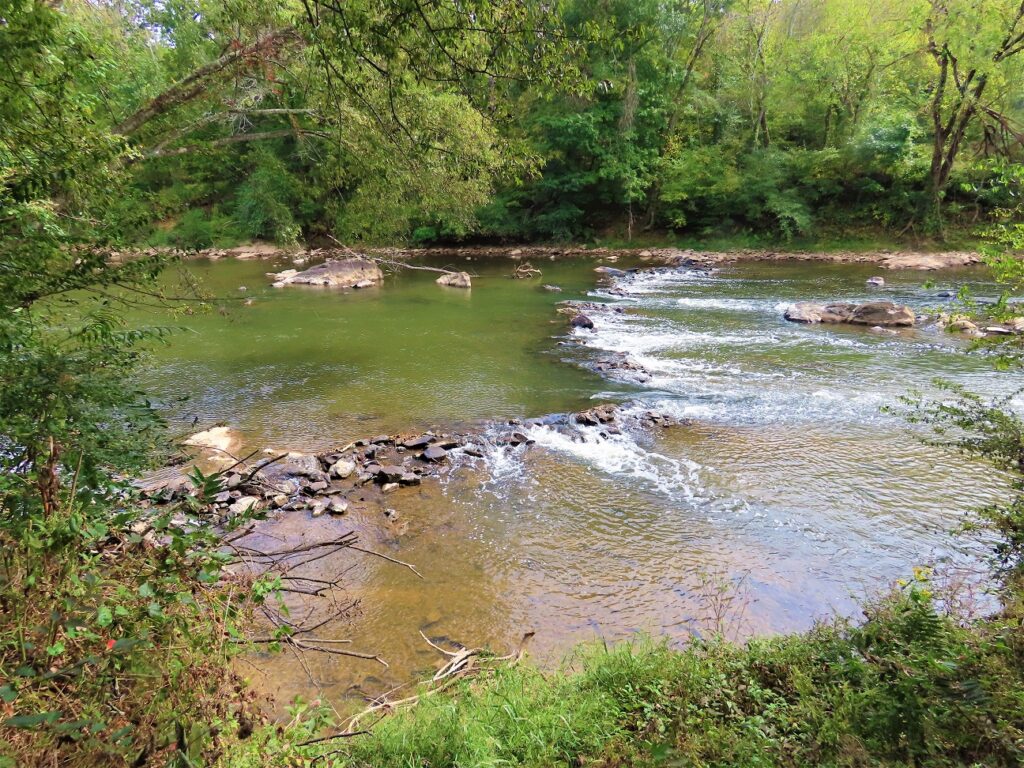
There are many plants of interest, including a locally rare Virginia Waterleaf (Hydrophyllum virginianum), known only from this site in Alamance county. This species blooms in the spring but is also quite evident throughout the summer and fall along the riverside trail that extends along the northern area.
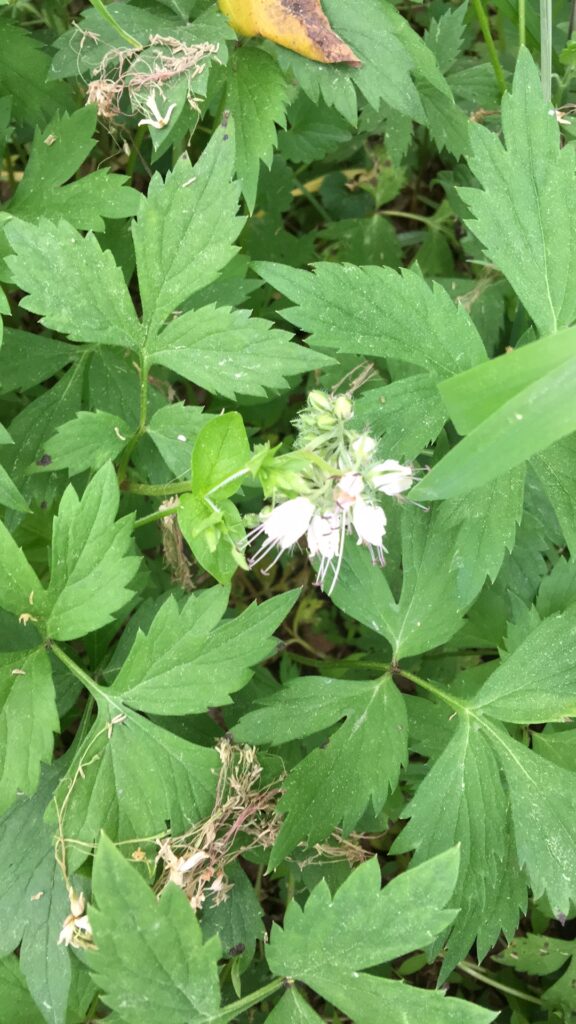
We are particularly interested in encouraging plants that produce flowers and fruit that feed animals and Flowering Dogwood (Benthamidia florida) is a good example. The red fruit are available in fall and winter to feed a wide variety of birds such as this male Scarlet Tanager.
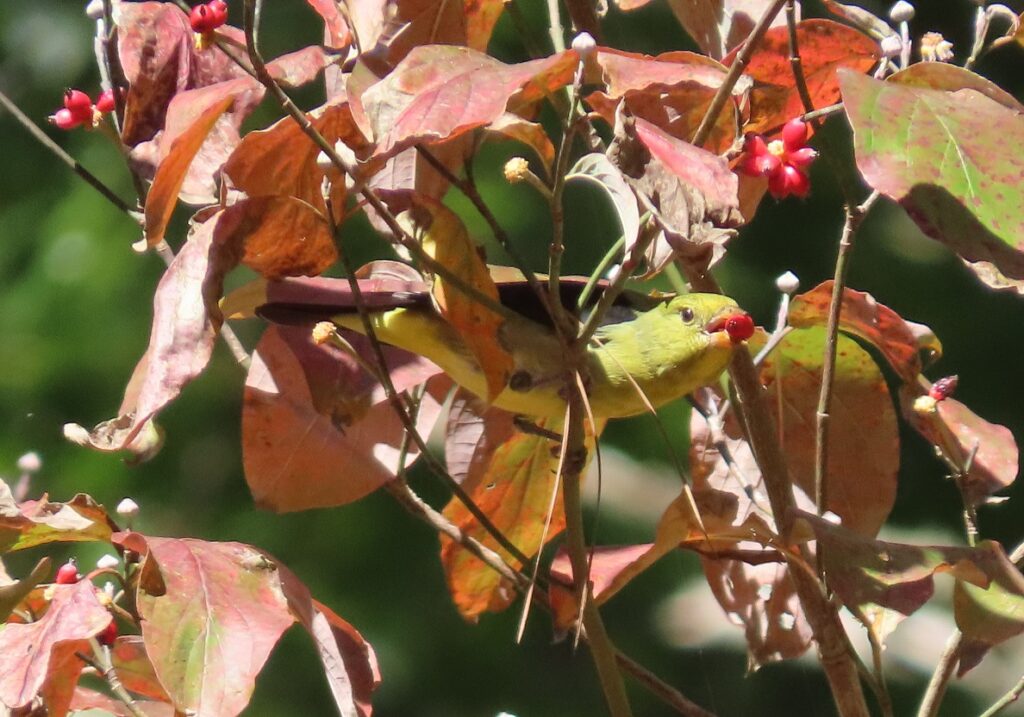
It seems likely that the property was entirely cleared for agriculture at one time and the presence of large old Loblolly (and Virginia and Shortleaf) pine trees reveals that the presently heavily wooded areas were previously open land. Pine trees are generally shade intolerant and will only grow in sun.
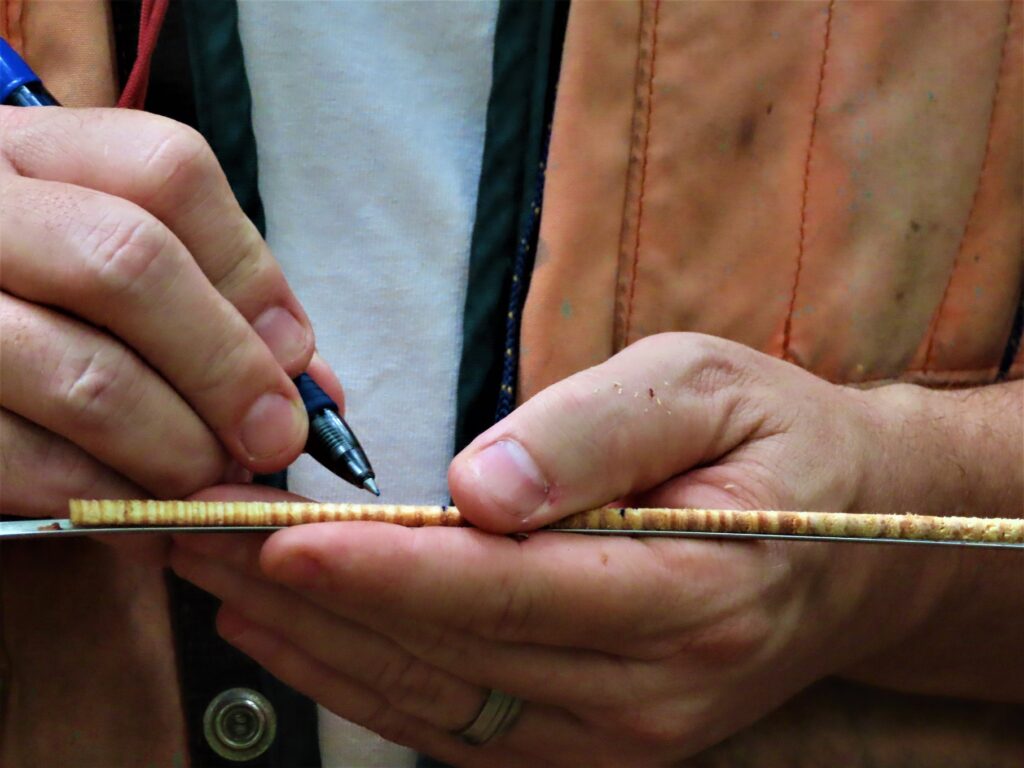
This large Loblolly Pine (Pinus taeda) was about 65 years old and the core reveals a substantial contraction in growth the last 10 years. There is an impressive variety of large hardwood trees also, which have steadily grown and replaced the early successional pines within the last 50–100 years. We are very fortunate that the recent owners did not cut the woods for timber.
Removing Invasives Allows Natives to Emerge
There are several problem areas that face us in managing this wonderful mixture of woodlands and wetlands. Some non-native invasives are widespread and difficult to control. Olives (Elaeagnus spp.), privet (Ligustrum spp.), Tree-of-heaven (Ailanthus altissima), Oriental Bittersweet (Celastrus orbiculatus), Japanese Stiltgrass, Beefsteak-plant (Perilla frutescens var. crispa) (see photo of bottomland pasture area), and others will always be problems. We considered removing the Beefsteak-plant and replacing it with a wildflower meadow but were advised by NRCS that this would be impractical. Some native alternatives could be Beebalm (Monarda didyma) and Hoary Mountain-mint (Pycanthemum incanum).
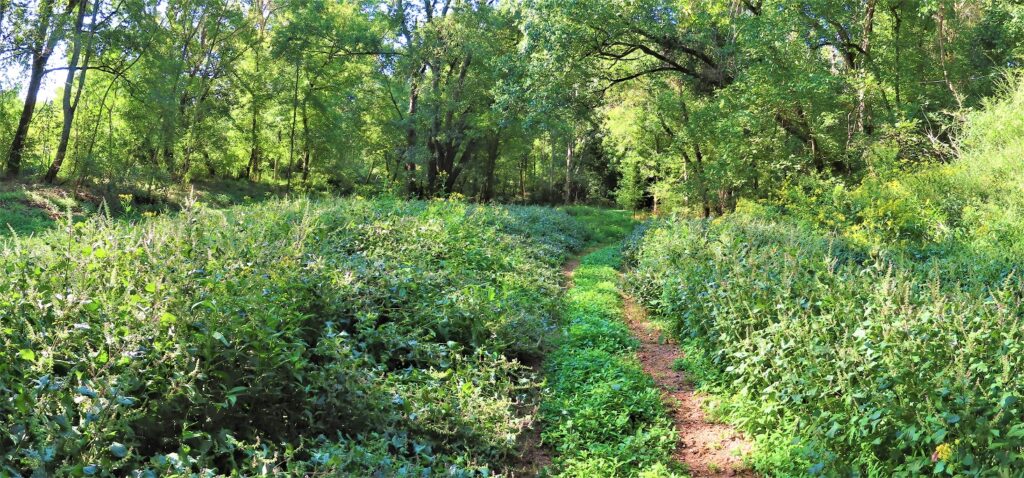
Small Lots can be a Wonderful Refuge
Instead I am now thinking of planting an orchard of Pawpaw (Asimina triloba), which are toxic and not eaten by deer. The woodlands are very heavily grazed by deer, which eat almost everything that is not toxic to them. This poses a huge problem for the future of the forest ecology.
We have found a wonderful ally in the protection and education of the Haw River floodplain ecosystem –the Haw River Assembly.
So take stock of whatever pieces of nature that you have control of and make them as natural as you can. Even including the lawn; cut infrequently and high, use no chemicals, leave the leaves, and most importantly, use better lawn management, more native plants, and connect native areas together if you can.
By Bill Dunson
Native Plant News – Winter 2022
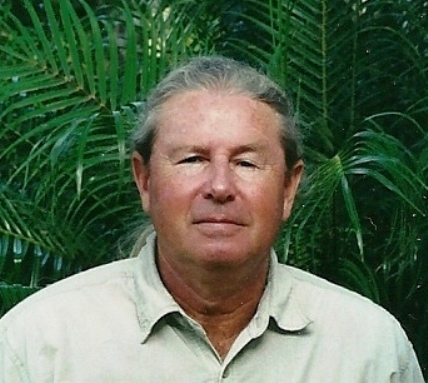
William Dunson, Ph.D. in zoology, is a native of Atlanta, Georgia where he skipped out on his final high school year. Today he believes in sharing his lifetime of knowledge with others and recently led two NC Native Plant Society tours of his North Carolina property. He attended Yale University and University of Michigan, and retired from a 34-year teaching and research career as a professor of biology at Penn State University. In addition to being a prolific scientific writer, after retirement, he worked as biologist for the Seminole Tribe and helped transform a 107-acre Virginia farm into a nature preserve.
